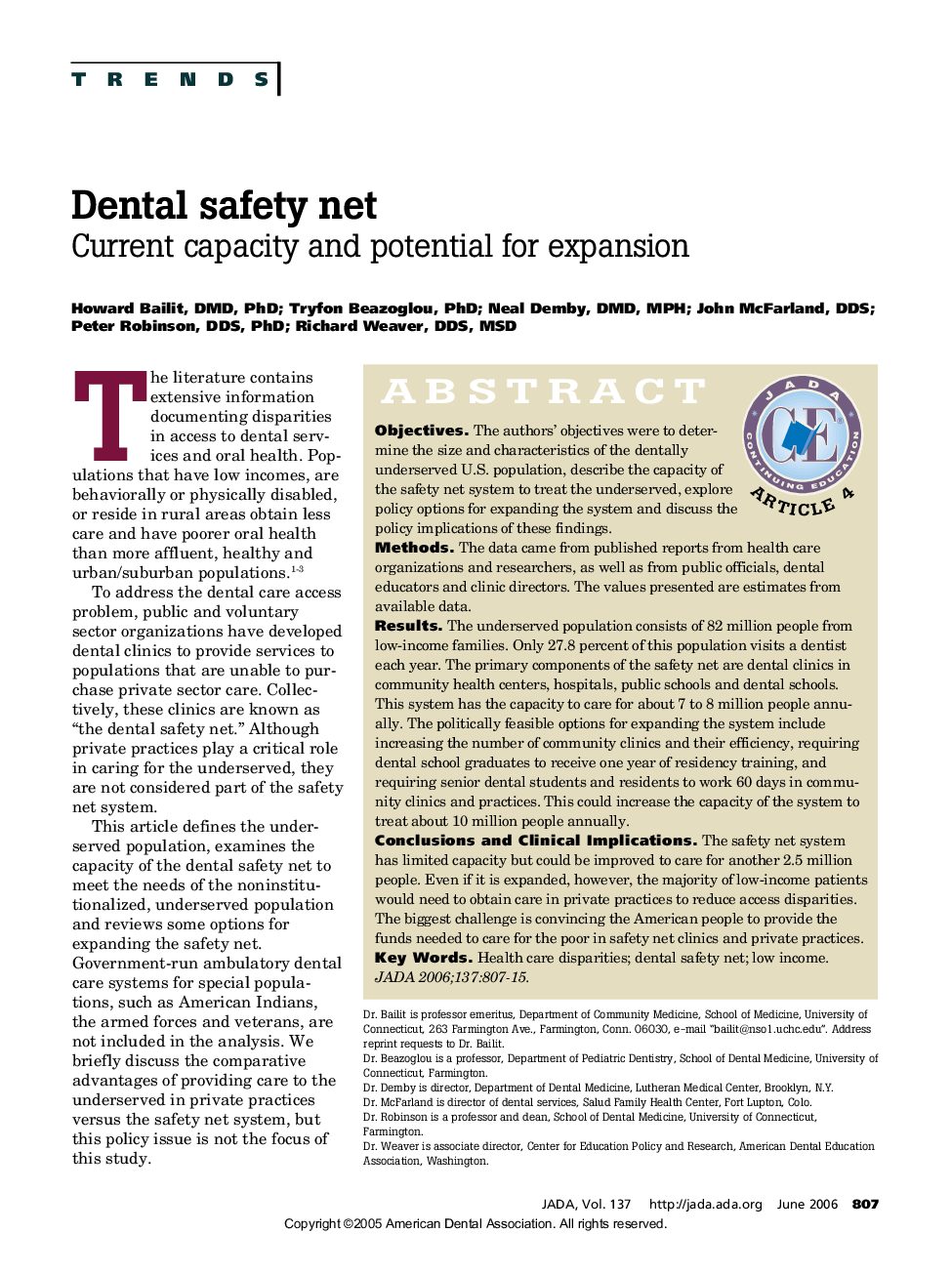| Article ID | Journal | Published Year | Pages | File Type |
|---|---|---|---|---|
| 3140268 | The Journal of the American Dental Association | 2006 | 9 Pages |
ABSTRACT ObjectivesThe authors' objectives were to determine the size and characteristics of the dentally underserved U.S. population, describe the capacity of the safety net system to treat the underserved, explore policy options for expanding the system and discuss the policy implications of these findings.MethodsThe data came from published reports from health care organizations and researchers, as well as from public officials, dental educators and clinic directors. The values presented are estimates from available data.ResultsThe underserved population consists of 82 million people from low-income families. Only 27.8 percent of this population visits a dentist each year. The primary components of the safety net are dental clinics in community health centers, hospitals, public schools and dental schools. This system has the capacity to care for about 7 to 8 million people annually. The politically feasible options for expanding the system include increasing the number of community clinics and their efficiency, requiring dental school graduates to receive one year of residency training, and requiring senior dental students and residents to work 60 days in community clinics and practices. This could increase the capacity of the system to treat about 10 million people annually.Conclusions and Clinical ImplicationsThe safety net system has limited capacity but could be improved to care for another 2.5 million people. Even if it is expanded, however, the majority of low-income patients would need to obtain care in private practices to reduce access disparities. The biggest challenge is convincing the American people to provide the funds needed to care for the poor in safety net clinics and private practices.
